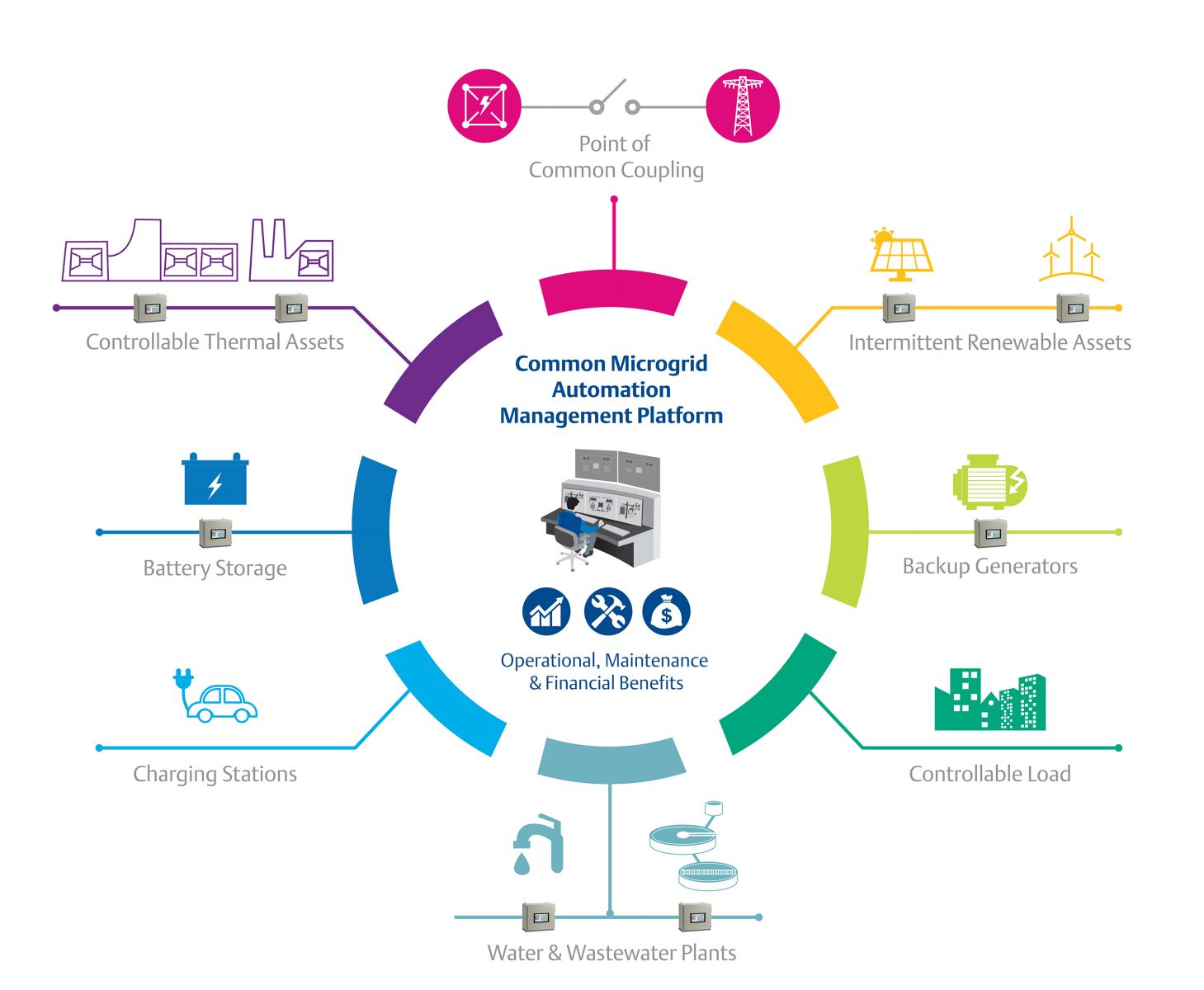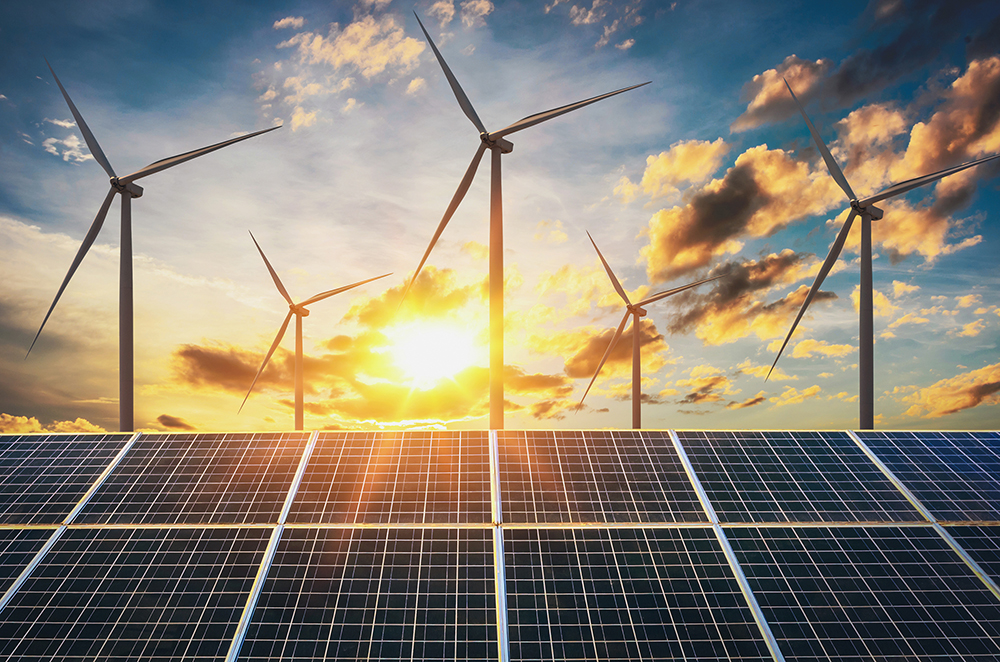How the Shift to Distributed Energy Resources Impacts the Water-Power-Carbon Nexus
As global water supplies become more stressed (due to steadily increasing demand spurred by population growth and record-breaking droughts) two major challenges-water scarcity and water quality-are impacting access to clean, plentiful water. While the severity of these challenges varies by location, it is clear that both demand more efficient use of our resources.
Water, power, and carbon dioxide emissions are intricately intertwined; the process to reliably produce safe, drinkable water is energy-intensive and directly tied to the external sources used to power these processes. The relationship of how energy is used, generated, and embedded in the water cycle, known as the water-energy-carbon nexus, is being tested by the impacts of cleaner power generation, evolving and more stringent regulations, climate change, and population growth.

"Every step of the water cycle-producing, moving, treating and heating water, then collecting and treating wastewater-consumes energy," according to the UC Davis Center for Water-Energy Efficiency. In fact, 20 percent of California's electricity and more than 30 percent of its natural gas goes to water utilities. It is easy to imagine, then, the crisis a water facility faces during power outages-and why it is becoming increasingly attractive to identify dependable power sources controlled by the facility.
Water facilities must be reliable. There is no room for outages or process and equipment failures. They must also be resilient: able to adapt to and manage the effects of events outside of the facility's control, such as natural disasters. Reliability and resiliency are nearly impossible to achieve without power. With the rise of devastating weather events causing emergency power outages in cities around the world, water treatment facilities are looking for new ways to ensure a plentiful, clean water supply. One solution has come to the forefront: microgrids.
Microgrids-decentralized and self-sufficient energy systems-are emerging as the next frontier in water industry efficiency. Built within a water utility's complex and tapped into multiple energy sources, including renewable options like solar and wind, microgrids are creating opportunities for water organizations to reduce their power costs and increase opportunities to leverage natural and clean energy sources. This is especially appealing as many utilities seek to both enhance sustainability as good corporate citizens and comply with new regulatory requirements.
But changing power infrastructure is not a one-way street. Microgrids can plug into the larger power grid to get more energy when needed or provide energy to the grid in case of excess. While this creates new opportunities for sustainability, it also adds complexity to the power landscape, which, in turn, impacts the water-power-carbon nexus. In fact, it is not an exaggeration to say the growing integration of renewable and distributed energy resources with traditional energy sources is reinventing the power business model and infrastructure.

New federal regulations (FERC 2222) allow alternative energy sources like small-scale generation or storage technologies, to compete in the wholesale electricity market. As such, "virtual power plants" that aggregate smaller distributed energy resources (DERs) - wind, solar, energy storage, demand response, electric vehicles - will be able to participate in the larger, networked power system. Instead of relying primarily on large coal or gas-fired plants, the smart grid will increasingly depend on virtual plants that switch seamlessly among various energy sources to make renewable power more accessible. This results in greater variability and complexity. Yet, all of these power sources (traditional and renewable) must be managed to provide stable, reliable power to meet the grid needs.
Overcoming this complexity to meet consumer demand means looking at solutions and technologies differently. This requires rethinking operational and business models for how energy is generated, transmitted, and distributed to meet the ultimate goal: keeping the power on for customers.
In a future with more decentralized energy generation, virtual power plants will need to model, aggregate, optimize, and dispatch energy onto the grid in real-time, alongside traditional power generation players. Establishing seamless integration between local at-the-source control technology and centralized operational control at the utility is key for optimizing resources in real-time while maintaining overall system reliability.
 This seamless integration will require the power industry to continue to innovate better ways of managing and automating energy production and delivery, from transmission to transaction. By enabling dynamic grid operations that safely and reliably manage distributed energy resources and virtual power plants, producers can pave the way for the sustainable grid of the future.
This seamless integration will require the power industry to continue to innovate better ways of managing and automating energy production and delivery, from transmission to transaction. By enabling dynamic grid operations that safely and reliably manage distributed energy resources and virtual power plants, producers can pave the way for the sustainable grid of the future.
Recent events in places like Texas, California, and Louisiana have shown that reliable power and water are not a given. But they are tremendously important to a healthy society. Utilities must adapt to provide these basic needs in the efficient, reliable, and resilient way that is required today.
A digital strategy using a scalable automation platform with intelligent software can seamlessly integrate systems from all levels of a power and/or water enterprise. In doing so, it contributes to the viability of integrated management of the water-energy-carbon nexus that, through reduced emissions and increased energy and water security, can help our cities and communities with their sustainability efforts.
Jason Blackburn is Global Product Director for the Power and Water Industries at Emerson, which offers software and automation solutions to help facilitate wider clean energy adoption.
Emerson | www.emerson.com
Author: Jason Blackburn
Volume: 2021 November/December








